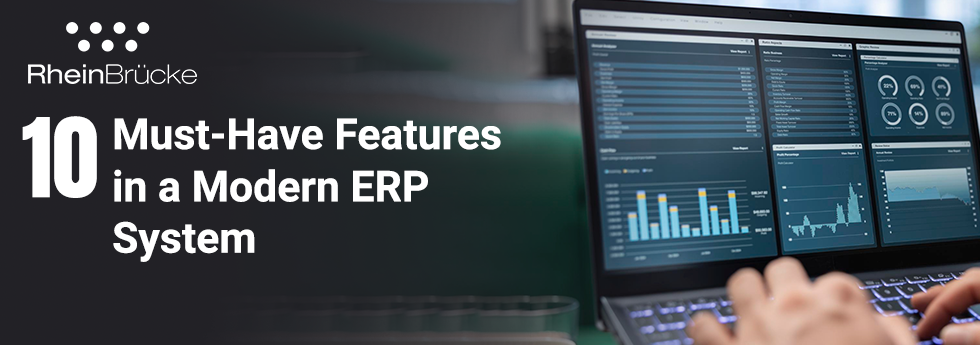How To Avoid Disruptions In your Supply Chain?
Supply Chain disruption is probably one of the biggest fears shared by nearly all manufacturing supply chain planning professionals. Even the most established organisation’s supply chains may be destabilized due to a myriad of reasons like the recent outbreak of the pandemic Covid-19, natural disasters like earthquakes or floods, shifts in government regulations, economic fluctuations, or even inaccurate demand forecasting.
In fact, there can be no single way to prevent supplier chain disruption. It is all about how you tackle an unforeseen disruption by not being caught by surprise and minimizing its effect so that you can maintain business continuity. For this, your supply chain operations should move towards a more comprehensive proactive model employing strategic sourcing and other supply chain best-practices that can effectively mitigate risks.
So, how do you go about mitigating supply chain disruptions? By increasing your buffer stock at any time? Not really! It might be effective in preventing any shortages, but stockpiling is a costly affair and can only bog down your operations and impact cash flow in the long run. So how can you maintain a lean supply chain and at the same time secure it against unexpected disruptions without costly fortifications?
The trick is in finding ways to be smarter and more proactive, rather than being defensive and reactive, and be prepared. Here are a few ways to keep yourself prepared for any disruptions that may arise in your supply chain.
1. Improve supply chain visibility – It’s nearly impossible to respond effectively to an unexpected breakdown without a complete understanding of every element of your supply chain. An integrated IT infrastructure that promotes connectivity and collaboration that enables you to monitor supply chain activity in real-time can make a lot of difference in identifying potential disruptions early on.
2. Transform your procurement into a value-driven strategy – Conduct timely reviews and adopt an agile procurement operations model factoring category specific strategic priorities across components such as cost quality, delivery, supplier innovation, etc. Ensure that the process includes a review of location specific factors such as geo-political, climatic etc that impact supply chain risks associated with each supplier. Strategic Sourcing can help strengthen your sourcing capabilities and supplier collaboration during challenging circumstances.
3. Diversify supplier networks – Having a diversified supplier network allows you to utilize back up suppliers and activate alternate sources of supply during disruptions and become more established. When you rely exclusively on suppliers from a single country, you become more dependent on them and you get affected in case of any regional problems. Whereas if you diversify your supply base, you can benefit from the non-interdependent sources of supply.
4. Create open channels of communication – There are a lot of things that you would do during a crisis. Keeping all stakeholders on the same page on what is to be done, or what is being done is one of the most important things. Open channels of communication with suppliers, employees and key customers will ensure everyone is aware of the change of plans, what’s going on, how it impacts them and what they can do to help.
5. Leverage automation – Leveraging digital technologies and automation enabling a smart supply chain can allow you to mitigate reliance on intensive labor to perform your daily operations.
Automation of supply chain activities like strategic sourcing & eprocurement can allow you to respond quickly to supply chain disruptions. Automation tools with analytical capabilities can provide data-driven insights that enable better decision making and help mitigate risks.
6. Invest in digital technologies that can provide greater intelligence – Thanks to the technological advancements in the modern era, we have a depth of technologies like Artificial Intelligence, IoT devices for demand sensing and goods movement tracking and advanced analytics algorithms for forecasting, which can be used to foresee supply chain risks and act to avoid disruptions.
IoT capabilities that help foster a digital ecosystem of connected systems providing relevant and updated data. Risk evaluation tools that make use of machine learning and analytics to find patterns that indicate risks or opportunities enable businesses to extract insights from data and finetune their future plans. Tools that can even rapidly model alternate supply and transportation scenarios are available.
All these technologies essentially allow you to quickly react to disruptions increasing your supply chain resilience.
7. Expect disruptions and be prepared for the worst with robust contingency plans – Even the best-laid supply chain management systems may collapse at times and things can go off the rails. With something on the scale of the Corona Virus pandemic that spread across the world, even if a manufacturer had diversified suppliers across China, South Korea, and Europe, it would be of no help with all these nations affected badly. So always be prepared for the worst.
There can be numerous what-if scenarios for which you can have contingency plans. Some of the what-if scenarios may seem very unlikely to occur. But it’s still good to have a contingency plan in place.
Enterprises need to map out their supply chain networks from end consumers to tier-N suppliers and for each of their supply chain nodes, warehouse, factory or transportation mode, establish a methodology to measure risks associated with them. Creating alternate plans like alternate suppliers, transporting routes, different shipping or inventory options, etc can help overcome an unexpected crisis.
The above steps can ensure that organizations can minimize events of supply chain disruptions and build a more stable supply chain. Organizations that proactively prioritize risk management before, during and after adverse incidents, are always positioned better to secure their bottom-line faster and be on track quickly.
Moving from a traditional linear supply chain model to digital supply networks can enable businesses to break down the functional silos and become more connected to their complete supply network enabling end to end visibility, collaboration, and agility. Hence, leverage digital technologies and automation to anticipate and meet your future supply chain challenges. RheinBrücke’s MeRLIN is a Strategic Sourcing Solution that allows sourcing process automation along with Supplier Relationship Management and planning functions using advanced analytics canto help mitigate risks in your supply chain and handle disruptions proactively.




